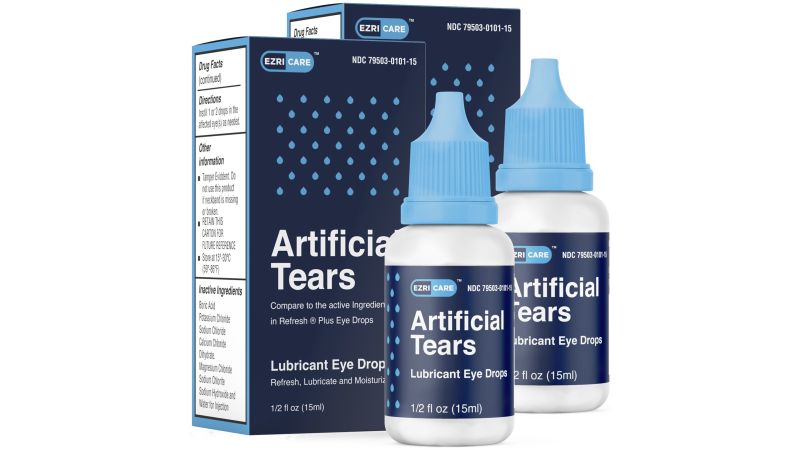
The CDC says there have been two more deaths related to the recalled eye drops
A 72-year-old woman lost vision in her left eye after using EzriCare artificial tears for dry eyes for nearly a week after the Apotex recall
Two additional companies, Apotex Corp. and Pharmedica USA, recalled eyedrop products in February, though products from those companies had not been linked to infections at the time.
One of the new case reports described a 72-year-old woman who lost vision in her left eye after using EzriCare artificial tears for dry eyes for about a week.
In 2017, a drug-resistant strain of the bacteria was believed to have caused an estimated 32,600 infections among hospitalized patients in the U.S., continuing a downward trend from 46,000 in 2012, the CDC said in an informational tip sheet.
Reported adverse events include infections of the cornea, bloodstream, respiratory tract and urinary tract. There are eight reports of lost vision and four reports of surgically removed eyeballs.
“She started noticing some blurry vision in her left eye for a few days,” said Dr. Ahmed Omar, an ophthalmologist at University Hospitals Cleveland Medical Center, who treated the woman. “It was initially painless, but according to the patient and her husband, one morning she woke up and she had a yellow discharge on her pillow. She noticed that the look of her eye had changed.
The woman went to the emergency room, where doctors discovered a large ulcer on her left cornea, nearly involving the entire eye. She was admitted to the hospital for three weeks, requiring IV antibiotics, antibiotic eye drops and multiple surgical interventions.
The man was in severe pain, and had lost vision in his right eye when he went to the Bascom Palmer Eye Institute. He had no previous eye problems but said he had used EzriCare artificial tears for eye dryness.
She said that when they saw him two days later, he was getting worse. “So that’s when we inquired about specifically the EzriCare tears, because we knew they were associated with resistant infection that may not respond to those really strong antibiotics.”
“At some point, he was in danger of having permanent vision loss,” said Dr. Guillermo Amescua, an ophthalmologist at Bascom Palmer Eye Institute. He has a scar on his left eyelid which is called corneal blindness, but could potentially have a better outcome if he had a transplant.
Shoji says this case highlights the short-term and long-term effects of Pseudomonas keratitis. In the short term, people may have terrible pain, decreased vision and a risk of a hole in the eye that could spread infection.
She said there is a chance of needing a surgery to fix the scarring that may limit the vision in the long term.
“If you have any eye symptoms, things like eye pain, eye redness, decreased vision, please see an ophthalmologist for evaluation,” she said. Please bring eyedrops, contact lens cases, or any other items that could be causing the illness when you come.
Prescott says people should keep eye drops sterile. It means avoiding touching the tips of the bottles with their hands, skin or eye, sharing the bottle with someone else, and using expired products.
The bacteria are becoming increasingly resistant to multiple drugs and are generally treated with antibiotics. Patients should not be tested for an infectious disease unless they have symptoms.

